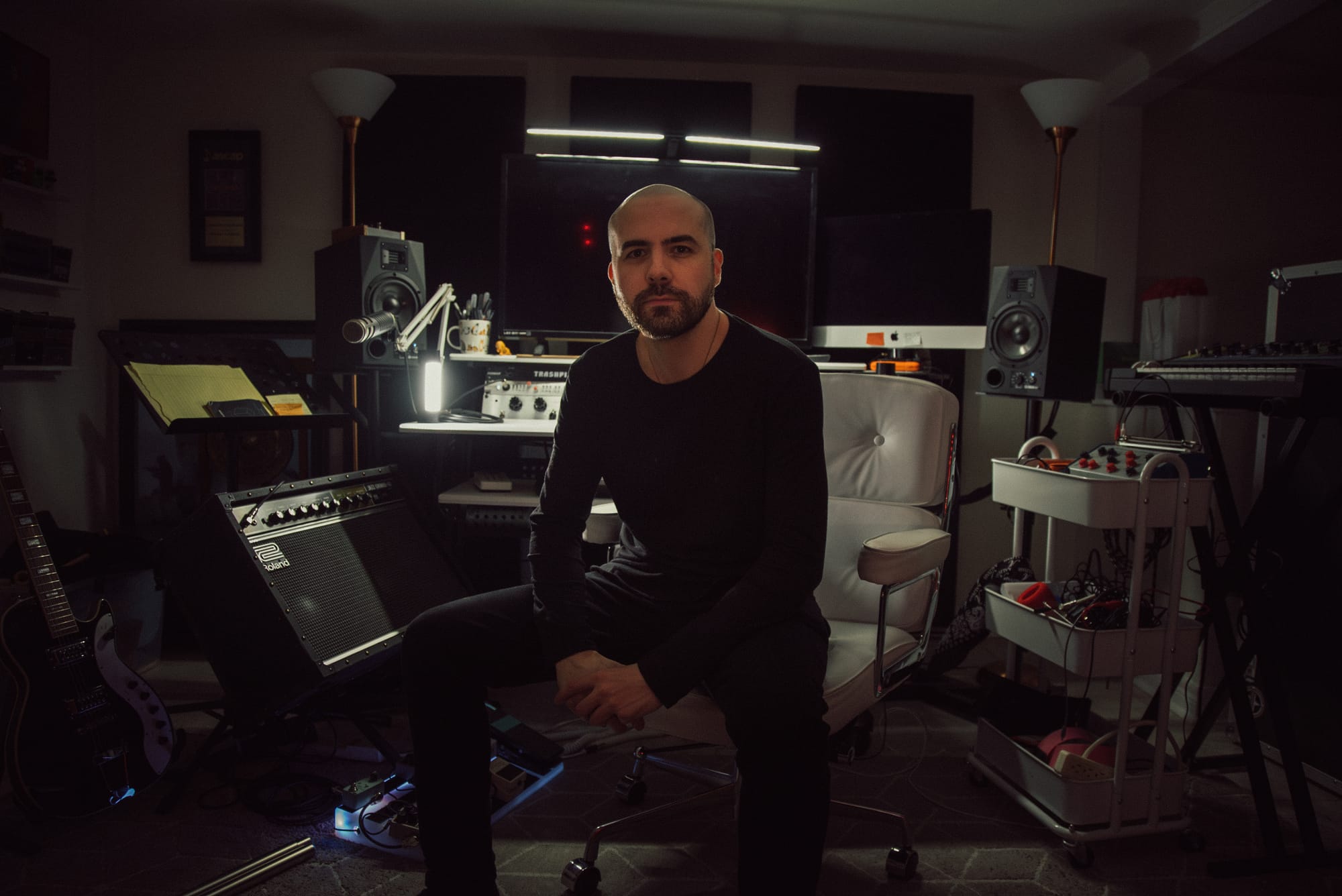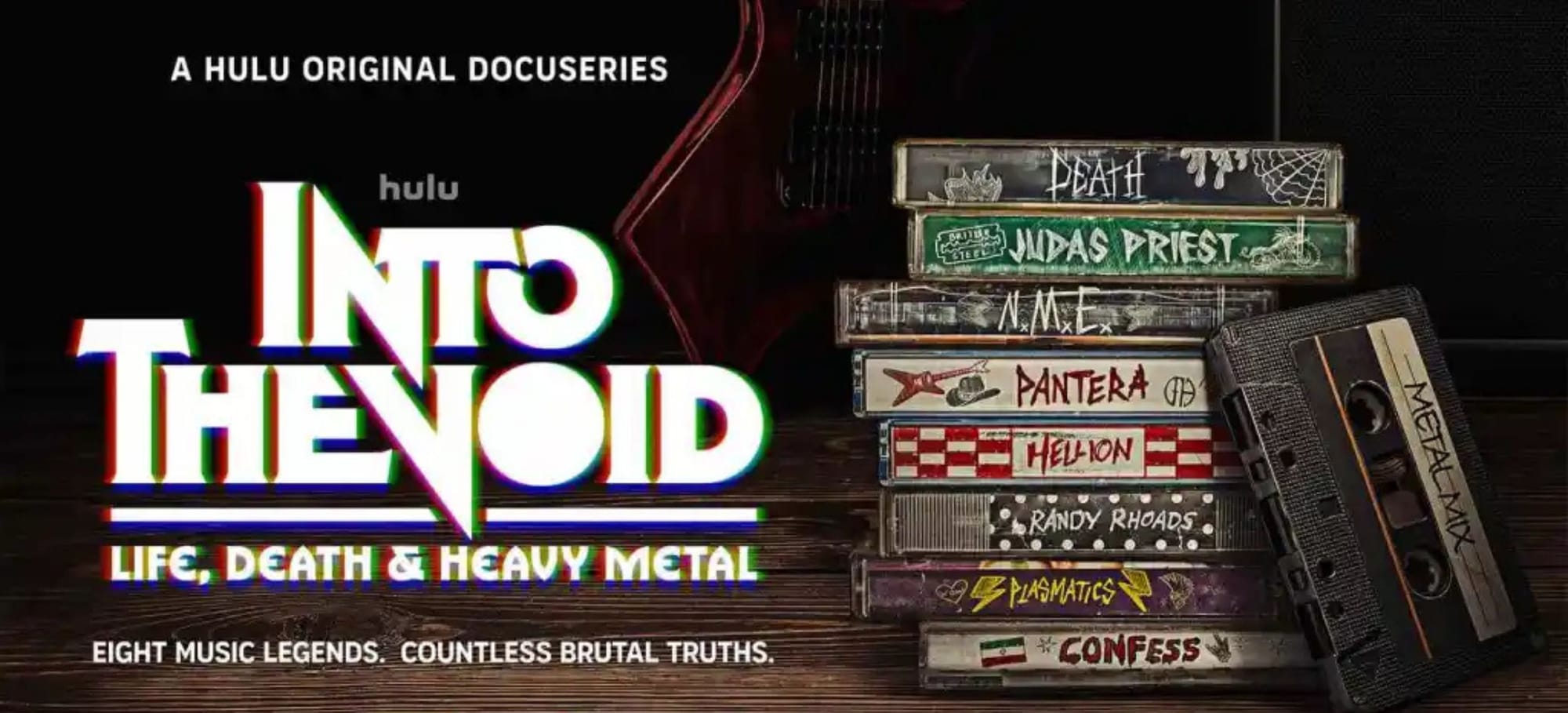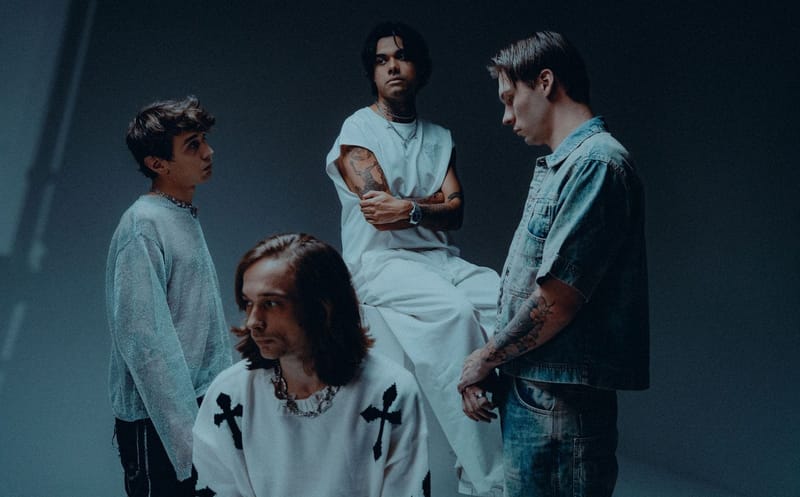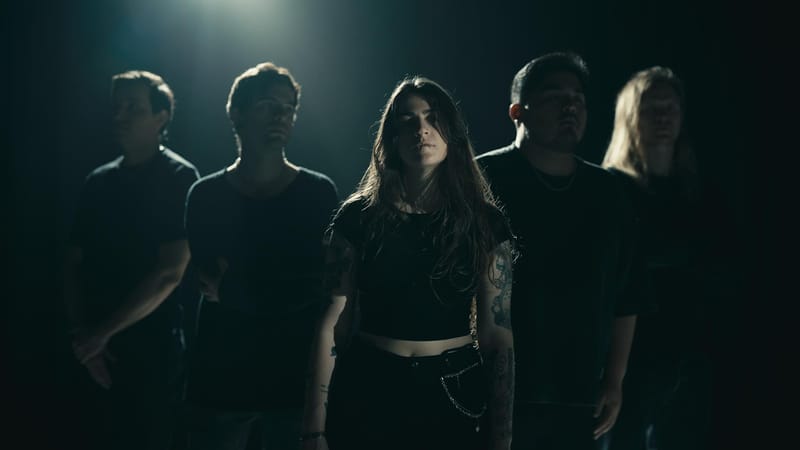Hulu Premiers Metal History Docuseries INTO THE VOID: Exclusive Interview with Film Composer Andrew Gordon Macpherson
Hulu released their 8 episode docuseries “Into The Void”—taking a personal look at at the lives and struggles of some of the most iconic metal acts of all time. Read an exclusive interview with Andrew Gordon Macpherson, who created the score for “Into The Void”.
On September 22, Hulu released their 8 episode docuseries Into The Void, which navigates the struggles and dark personal lives of some of the most iconic metal bands. Into The Void covers events like the murder of Dimebag Darrel of Pantera, Judas Priest’s trial, the death of Ozzy Osbourne guitarist Randy Rhoads, Chuck Shludiner of Death, and more.
Into The Void shows the cultural impact, dark moments, and inner lives of some of metal music’s biggest names. You can watch on Hulu, available now.
Exclusive Interview with Andrew Gordon Macpherson on Scoring Into the Void

Heavy riffs, screaming solos, and larger-than-life personalities—Into the Void: Life, Death & Heavy Metal chronicles the legends of heavy metal, and composer Andrew Gordon Macpherson knew the score had to match that intensity.
Rather than mimic classic tracks, he transformed metal’s raw materials—guitars, amps, whammy pedals, even feedback—into cinematic textures that drive the narrative. From recreating Randy Rhoads’ ornate guitar flourishes to translating Pantera’s Texas swagger into ambient soundscapes, Andrew’s work captures metal’s chaos, theatricality, and emotion in a way that’s both reverent and wholly original. It’s heavy metal, reimagined for the screen. Below, Andrew delves into how he crafted the score for Into the Void and much more.
Into the Void covers the legends of heavy metal—how did you approach shaping a score that both honors the genre’s legacy and serves the narrative of the series?
For me it was never about trying to “out-riff” the legends we’re talking about — that’s impossible. The job was to create a score that could carry the weight of the stories and spirit of heavy metal. The challenge was sculpting that energy into something that could live side-by-side with interviews, archival footage, and the needle-drops of classic tracks without stepping on them. I wanted the score to feel like it was forged from the same fire, but crafted in a way that helps the narrative unfold.
Before writing a note, what was your first instinct: to lean into authentic metal instrumentation or to craft something more cinematic?
My first instinct was honestly panic — “how do you write music worthy of these icons?” Once I got over that, I realized the answer was both. Authentic instrumentation gave me the grounding: real guitars, bass, amps, pedals. But these stories demand range — tenderness, suspense, even absurdity. So the score became a hybrid. Some cues are processed riffs dressed up as underscore, others are ambient dreamscapes of feedback and distortion woven into classic cinematic orchestral arrangements.
How did you balance your own musical voice with the raw, iconic energy of heavy metal?
I grew up on Sabbath, Pantera, Soundgarden, Deftones, Sepultura, and played in thrash metal, nu-metal and even briefly in a death metal band so that DNA is already in my bloodstream. But I’ve spread my wings a lot as a composer and artist and I wasn’t hired to be a tribute band — I had to filter that fandom through my own storytelling instincts. My “voice” comes from how I use textures, space, and motion to score narrative beats. So I’d use a Dimebag-inspired guitar glide, but mix it with production techniques that are very much my musical “accent.” It’s about honouring the spirit without becoming an impersonator.
Did you create unique musical themes for different eras or legends within the series, and if so, how did you distinguish them?
Yes, there are melodic themes for family, for “the studio”, for headline news, and more as well as individually for different subjects, but also I pulled from what made each artist unique “texturally.” Randy Rhoads’ classical guitar obsession shows up in his episode as more ornate guitar parts. Pantera’s Texas swagger creeps in with slide-inspired whammy parts and organ textures. Wendy O. Williams’ punk-industrial chaos pushed me toward musique concrète and noise. They’re not always obvious, John-Williams style “themes” you’d hum, but I tried to create a fingerprint for each story.
Heavy metal is known for its intensity and aggression, but also for its theatricality—how did you translate those qualities into a score that works for television storytelling?
Theatricality is built into metal and of course, but that can tip into camp if you’re not careful. So I tried to capture the sense of spectacle through scale and contrast: Clean and distorted, melodic and ugly, huge walls of sound followed by simple, quiet piano melodies, that type of thing. It’s more about that emotional rollercoaster of the story and trying to transport people to me than just power and virtuosity.
Were there any unconventional instruments, sounds, or production techniques you used to capture the essence of the genre?
I built “string sections” out of layers of guitar feedback, recorded metal objects as percussion, and even used MIDI to program whammy pedal glides so they’d move with uncanny precision for the Pantera episode. Anything I could to repurpose the raw materials of metal into a cinematic toolkit.
How much research or listening did you do into the bands and legends covered before you began composing?
I did a lot of re-listening, but honestly I already lived with much of this music as a fan throughout my life. My research leaned more into the personal details: digging into interviews about gear and player idiosyncrasies. That helped me figure out how to reflect their personalities musically. It wasn’t about just transcribing riffs — it was about understanding their character and style.
Were there moments where you worked directly with archival recordings or had to avoid sounding too close to existing songs?
We always wanted the needle-drops to shine as the definitive voice of the artists covered. There were moments where I had to bridge gaps between song and score for a smooth viewer experience, but mostly my score had to complement, not compete. So if something started feeling too close to a famous riff or melody, we’d pull back and translate the vibe into a different form — maybe through filtering and reverb and sound design, maybe through orchestration.
Did particular artists or bands featured in the series inspire you to experiment with their signature sounds in subtle ways?
Yes — that was one of the most fun parts. I recreated Randy Rhoads-style tone for his episode, even borrowing an original MXR distortion+ script pedal, then manipulated it into an ambient texture for the score. For Pantera, I always loved their use of the Eventide H3000 (1980’s digital multi-effects processor) on the Cowboys from Hell album, especially the automatic drum-gate algorithm used on the “Domination” breakdown and all the micro pitch stuff on Phil’s vocals. I’ve been using that box on anything and everything for years and this is no exception. I hope people love the score and love Into The Void!
You can watch a behind the scenes video of Andrew creating music for the series on YouTube below:
Thanks for reading!
- Read more of the latest rock/metal news here
- Subscribe to our Metal News Email list for weekly updates!
- Join our free 5-day music marketing email course!
- Support The Metalverse and go ad-free.
- Follow us on Social Media | Instagram | Facebook





